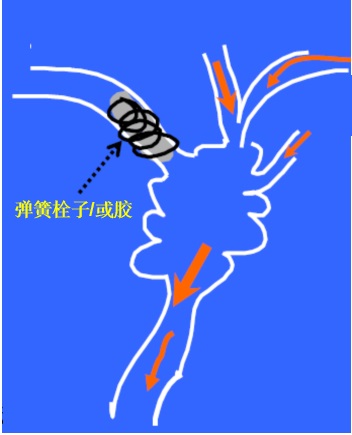Other explanations proposed for the suboptimal efficacy of TIPS in controlling GVH are the “proximity”, “throughput”, and “recruitment” theories[35-37].
对于TIPS在控制GVH方面的次优疗效的其他解释是“贴近度”、“通过量”和“招募”理论[35-37]。
The 'proximity theory' suggests that since GV (supplied more commonly by posterior and short gastric veins) are anatomically farther away from the TIPS shunt, they are less likely to be decompressed as compared to EV (supplied predominantly by left gastric vein).
“贴近理论”表明,由于GV(更常见的是由胃后静脉和短静脉提供)在解剖学上离TIPS分流器更远,与EV(主要由左胃静脉提供)相比,它们减压的可能性较小。
The “throughput theory” states that large GRS associated with GV can compete with the TIPS stent and may lead to early TIPS dysfunction.
“通量理论”指出,与GV相关的大胃肾分流(GRS)可以与TIPS支架竞争,并可能导致早期TIPS功能障碍。
The “recruitment theory” describes the development of new feeders after the proximal embolization of a GV complex.
“招募理论”描述了GV曲张近端栓塞后新的供血静脉的发展。

These factors have led to the development of obliterative therapies, like balloon-occluded retrograde transvenous obliteration (B-RTO), in the management of GV.
这些因素导致了闭塞性治疗方法的发展,如球囊闭塞的逆行经静脉闭塞(B-RTO),在GV的治疗的应用。
B-RTO and its other variants, like coil-assisted retrograde transvenous obliteration, plug-assisted retrograde transvenous obliteration, and balloon-assisted antegrade occlusion, have emerged as a popular method for treatment of GV.
B-RTO和其治疗上变化,如弹簧栓子辅助逆行经静脉闭塞(CARTO)、血管塞辅助逆行经静脉闭塞(PARTO)和球囊辅助顺行闭塞,已成为治疗GV的流行方法。
The goal of these therapies is to trap sclerosant within the gastric variceal complex by controlling both inflow and the outflow using balloon, coils, or plug.
这些治疗的目的是通过使用球囊、弹簧栓子或血管塞控制流入和流出,在胃静脉曲张内被注射的硬化剂滞留。
Since its introduction, multiple studies and meta-analyses have reported technical and clinical success rates over 95% for B-RTO[38-40].
自引入它以来,多项研究和荟萃分析报告了B-RTO的技术和临床成功率超过95%【38-40】。
Also, GV rebleed rates of patients who had undergone a successful B-RTO procedure range between 0-20%[38-40].
此外,成功接受B-RTO手术的患者的GV再出血率在0-20%之间[【38-40】。
Notably, compared to TIPS, these shunt occlusion therapies divert blood towards the liver and have shown to preserve or improve the liver functions in the first 6-9 mo[40,41].
值得注意的是,与TIPS相比,这些分流闭塞疗法将血液转向肝脏,并已显示可以在前6-9个月中维持或改善肝功能【40,41】。
|

